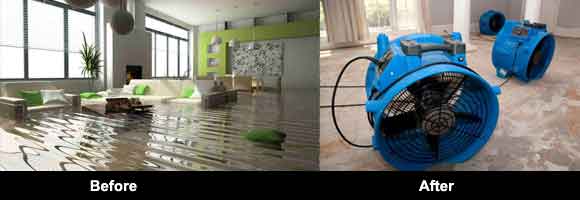Anybody who has ever been through a storm or flood understands the frustration that goes along with long-term restoration. In this article, we will discuss the steps you can take to take control of your flood damage as soon as possible.
What is Flood Damage Restoration?
Flood damage restoration is the process of restoring property to its pre-flood condition. This can involve removing water and debris, cleaning up damage, repairing or replacing damaged property, and restoring important utilities. Flood damage restoration can be a daunting task, but with the right tools and guidance it can be done quickly and efficiently.
Pros and Cons of Flood Damage Restoration
There are a few pros and cons to consider when thinking about flood damage restoration. On the one hand, it can be an incredibly fast and efficient way to get your home or business back up and running as soon as possible. On the other hand, flood damage can be complex and expensive, so it’s important to do your homework before choosing a restoration company. Here are some of the key considerations:
-Price: Flood damage restoration services can be relatively cost effective, depending on the severity of the damage. However, it’s important to keep in mind that not all restoration companies are equal, so it’s important to do your research before choosing one.
-Timeframe: Flood damage restoration can take a lot of time depending on the size of the damage and the complexity of the repairs. Make sure you factor this into your timeline, and don’t expect to have everything done within a day or two.
-Quality: It’s important to ensure that the restoration company you choose is reputable and has years of experience restoring homes or businesses after floods. There are many scam artists out there who try to take advantage of people after a disaster, so make sure you do your
Short Term vs. Long Term Disaster Recovery
In the short term, you need to focus on repairing what is damaged. In the long term, you will need to consider ways to prevent or minimize future damage.
The key to effective short-term disaster recovery planning is to keep your eye on three main goals: restoring essential services, rebuilding and protecting critical assets, and mitigating the risk of future disaster. If you can accomplish these tasks while minimizing disruption to your everyday operations, you’ll be in good shape.
But there are some things you should do even if your primary goal is restoring essential services. For example, if water is flooding into an office building, turn off the water valves in the basement and on upper floors. This will conserve water and cut down on potential flooding.
When it comes to rebuilding after a disaster, think about what needs to be replaced and why. Keep in mind that many buildings – especially older ones – are not designed for a lot of stress and strain. Consider whether the new construction will be able to withstand future disasters.
One of the most important steps in long-term disaster preparedness is identifying risk factors and making decisions about how best to mitigate them. This may include
Financial Considerations for Flood Damage Restoration
Flood damage restoration services is a cost-effective way to improve your home’s market value and restore yourPeace of Mind. Here are some financial considerations to keep in mind when restoring flood damaged property.
- Take photos and measurements of the damage before and after the flood. This will help with estimating the cost of repairs.
- Estimate the cost of materials needed for repairs, such as drywall, insulation, roofing, siding, painting, etc. The price of these materials can vary a great deal depending on location and season.
- Factor in contractor fees and other associated expenses, such as permits, debris removal, and lost wages while the property is vacant.
- Calculate the total cost of restoration and make sure you have enough funds available to cover all costs up front. It’s important to have an accurate estimate so you don’t overspend on repairs that won’t end up being necessary.

